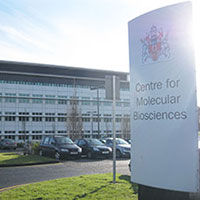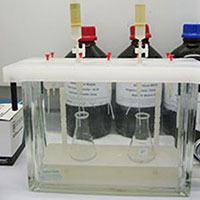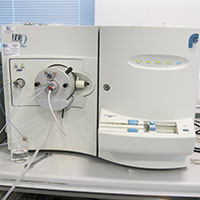24 Mar 2015
Mohd Nazren Bin Radzuan, was awarded a Leverhulme Travel Bursary in December 2014. Here Mohd Nazren talks about what he was able to do as a result of receiving the bursary.
'It was a great opportunity to receive a Leverhulme Travel Bursary from SCI to support my visit to Professor Ibrahim Banat's Laboratory at the School of Biomedical Sciences, University of Ulster, in Northern Ireland. Professor Ibrahim Banat is a recognised world expert in biosurfactants research, including their use in pharmaceutical and environmental applications. It is like a dream come true to visit Prof Banat's lab and meet his research group. The aim of my visit was to expand my general knowledge of biosurfactants and learn more about purification and characterization of rhamnolipids, microbial surfactants (biosurfactant) from the glycolipid family, and the focus of my PhD.
'Furthermore, the purified rhamnolipid was analysed by ESI-MS, to see the mass over charge ratio (m/z) value. The rhamnolipid sample will be ionised in negative mode and then the ion travels into the mass analyser and will arrive at a different part of the detector based on their m/z value. The ESI-MS can confirm which types of rhamnolipid produce by Pseudomonas aeruginosa ATCC 9027. This method has been taught by Dr Konstantina Tsaousi. Of course, two weeks is not long enough to learn all the methods and instruments available at the laboratory. I really hope that I can extend my visit so that more knowledge and experienced can be gained from them. Fig 2 to the right shows the solid phase extraction method.
'Toward the end of my visit, I gave a research seminar entitled 'Production of Biosurfactant by Pseudomonas aeruginosa ATCC 9027 using cooking palm oil as a carbon source' to Prof Ibrahim Banat's group. I presented my result from the first year of my PhD at The University of Manchester, which demonstrates the ability of Pseudomonas aeruginosa ATCC 9027 to grow on cooking palm oil as a carbon source and produce rhamnolipid which reduces surface tension and will stabilise emulsions. I also presented the result of the work carried out during the visit, including the SPE method to remove impurities from the produced rhamnolipid and also characterization using ESI-MS to positively identify the biosurfactant produced as rhamnolipids. My presentation generated useful discussion and recommendations for the the continuation of my PhD Work.
'As a PhD student at the School of Chemical Engineering & Analytical Science at the University of Manchester, visiting the University of Ulster gave me a good experience. It enables me to develop my skills and competencies in handling high-tech instruments such as SPE and ESI-MS (see Fig 3 to the left). It also helped me to expand and gain new knowledge and a different perspective in the biosurfactant research area. Furthermore, with respect to my future career as a lecturer and researcher at the Department of Biological and Agricultural Engineering, Universiti Putra Malaysia, this visit has enhanced my personal and intellectual maturity through networking with other researchers and increased my self-confidence in my working research area. I am very grateful to SCI for awarding me a Leverhulme Travel Bursary, which enabled me to undertake my laboratory visit at a world-leading research centre. Learning new biosurfactant purification and characterization techniques and also sharing my PhD research really gave me new vital experience that has motivated and better equipped me to face the future challenges of my PhD'.
Mohd Nazren Bin Radzuan,
University of Manchester



